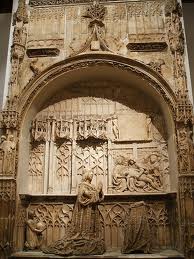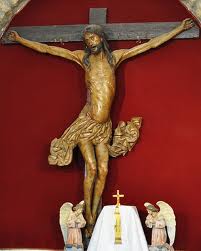Gothic: Gil de Siloé
Gil de Siloé, who has also been documented as being named Gil de Siloe and Gil Siloe, was a Castilian Spanish sculptor whose sculptures were completed in the Gothic style. His son, Diego de Siloé also became a Spanish sculptor and architect.
Gil de Siloé (c.1440-c.1505)
It is thought that Gil de Siloé was born in Orléans in France, but that he moved to Burgos in Spain. It is also thought that he did not study in Spain, but probably trained in France or Germany. Yet Spain was the country in which he completed all of his sculptures, hence why he is considered to be a Spanish sculptor and has been adopted as part of the Spanish culture.

The majority of the works attributed to Gil de Siloé can be found in Burgos, although it is not known how or why he came to live here. Gil de Siloé had a workshop in Burgos which he used to help expand the popularity of his style by taking on disciples and apprentices. However, there is also evidence to support the fact that he also worked in the city of Valladolid. Valladolid was the city where he completed one of his most famous works, the facade for the San Gregorio School, which today is the 'Museo Nacional de Escultura' (National Museum of Sculpture).
Without doubt, Gil de Siloé's most famous work was 'La Cartuja de Miraflores' (The Monastery of Miraflores) in Burgos. This work consisted in three separate parts. The first is the sculptures of the Catholic monarchs Juan II and Isabel of Portugal which form the top of their tomb, and who lie on a base in the form of an 8-pointed star. The second piece of sculpture by Gil de Siloé is the tomb of the Prince, Don Alfonso. Finally, Gil de Siloé also sculpted the main altarpiece at the head of the church.
The figures of the Catholic monarchs Juan II and Isabel of Portugal were sculpted in alabaster, similar to gypsum, and took four years to complete, from 1489 to 1493. Due to the base being an 8-pointed star, it meant that there was plenty of space surrounding the two sculptures for other work. Therefore the space was filled with many smaller sculpted figures.
The tomb of Prince Don Alfonso, consists in many different images of plants and animals. Religious iconography is, of course, also present in the sculpture, featuring the Virgin Mary and the Archangel. The statue of Don Alfonso is featured in the middle of the sculpture.

The main altarpiece is no less important than the other works Gil de Siloé produced for 'La Cartuja de Miraflores'. This piece was completed between 1496 and 1499. In the middle of the work, Christ is featured on the cross. At his feet, the Virgin Mary and Saint John can be found. The rest of this large piece features scenes from the story of Christ, such as the Birth of Christ. For this sculpture, Gil de Siloé collaborated with Diego de la Cruz, the famous Hispanic painter, who was most certainly an influence in the choice of using polychromed wood as the material of this sculpture.
Some of Gil de Siloé's other works include the 'sepulcro de Don Juan de Padilla' (Tomb of Don Juan de Padilla) which can now be found in the Museum of Burgos, the main altarpiece of the 'Capilla de Santa Ana' (Chapel of Santa Ana) in Burgos Cathedral, and the statue of Santa Ana in the 'Capilla de los Condestables' (Chapel of the Constables) also in Burgos Cathedral.
Today, there are many other works in Spain that have been considered to be of a similar style as that of Gil de Siloé. Therefore, experts are working hard in order to be able to attribute these works to this Spanish sculptor.
Gil de Siloé's style was extremely technical, thorough, ornate and decorative. It is believed that he drew some inspiration from manuscripts and engravings of the time. For example, one of the constant features of his works was the link between children and plants. This is particularly evident in the sculpture Gil de Siloé made for the tomb of the Prince, Don Alfonso. It is widely believed that this imagery was probably adopted by Gil de Siloé from 'Die Schedelsche Weltchronik' (The Nuremberg Chronicle) of 1493.
